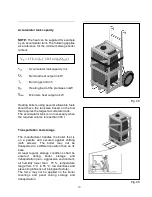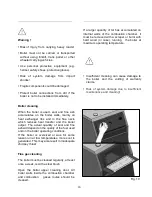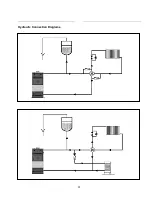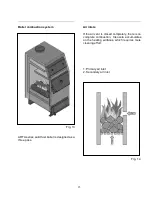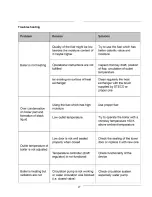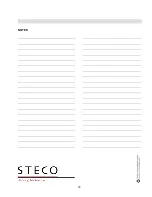
13
Only then open the stoking door completely
and start stoking the boiler. After shutting the
stoking door, set the chimney flap again and
restore the functioning of the regulating
hatch.
•
Boiler doors must not be held open as the
boiler is continuously working.
•
Provide a minimum 5 cm gap to be
between top point of the fuel and ceiling of
stoking chamber when boiler is stoked.
Overnight heating mode
This mode is used when you want to maintain
the fire in the boiler for instance over night.
First scrape all ash out of the combustion
chamber, with the chimney flap completely
opened. Then stoke the boiler with fuel and
shut the boiler up completely. Then shut the
chimney flap and also almost shut the
regulating hatch. This will reduce the chimney
thrust and restrict the supply of combustion
air. Shut also the secondary air supply
rosette in the stoking door. To restore the
boiler’s required output, just open the
chimney flap and partially open the regulating
hatch to the required boiler output.
Removing solid combustion residuals
Removing and emptying the ashtray situated
underneath
the
stoker
in
the
ash
compartment do this. This must be done on a
regular
basis
to
prevent
ash
from
accumulating and blocking the supply of air to
the combustion chamber from underneath the
stoker.
Dewing and tarring
When starting fire in a cold boiler, water
condensates on the walls and runs down into
the ash compartment, which may make an
impression that the boiler is leaking. This
dewing will disappear after the astray has
settled on the boilers inside walls. When
running the boiler with low water temperature
usually below 65 °C, or when using damp fuel,
water condensates in combustion gases and
the condensate runs down the boiler’s cold
walls. Low temperature heating also reduces
the chimney life. Therefore it is recommended
to equip the boiler with for instance a four-way
blending valve which will ensure that the
temperature of return water does not drop
below 50°C. Boiler tarring occurs under similar
conditions (back of combustion air, the boiler
is choking). To prevent dewing and tarring, we
recommend you run the boiler at temperatures
higher than 65 °C and choose a boiler to
match the required heating system output. An
oversized
boiler
suffers
unnecessarily,
because it has to be run at low temperatures.
Boiler shutdown
We do not recommend that you try to speed
up the boiler combustion process. The fuel
must burn completely on its own on the stoker.
Short term shutdown
After shutting the boiler down, clean it, remove
all combustion residuals, empty the ashtray,
clean the stoking door contact surfaces and
the ash compartment, and then shut the
boiler’s stoking door and ash compartment
door.
Summary of Contents for ARTA series
Page 1: ...REV 01 2012 122088 ...
Page 5: ...5 Boiler dimensions ...
Page 6: ...6 Boiler packaging ...
Page 7: ...7 Technical parameters ...
Page 22: ...22 Hydraulic Connection Diagrams ...
Page 24: ...24 ARTA boiler parts ...
Page 25: ...25 ARTA boiler spare parts lists ...
Page 26: ...26 ...
Page 27: ...27 Troubleshooting ...
Page 28: ...28 NOTES ...



















